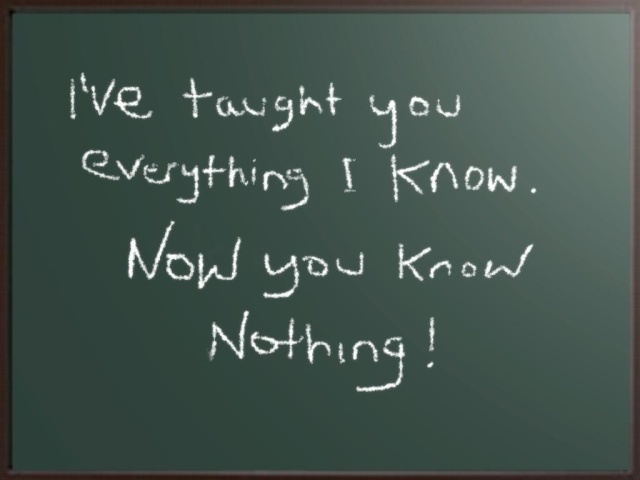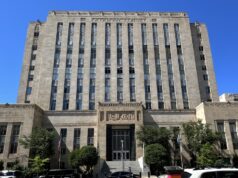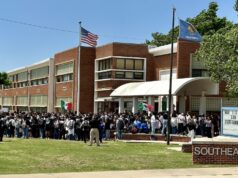For more than 25 years, I have cautiously supported school choice — at least in terms of homegrown charter schools offering alternatives to local families.
Oklahoma City has been fortunate. We have excellent private schools and charters serving lower-poverty and alternative-school populations, and we even have a few outstanding higher-poverty charters serving as many at-risk students as they can handle. But, the first generation of competition-driven school improvements went hand-in-hand with the outmoded 1990s gentrification and the urban revitalization that sought to lure sports teams and convention centers from one city to another.
Urban charters, like other schools embracing win-lose policies, helped some children gain access to a better education while leaving others behind in even worse conditions. Thus, choice helped create schools with more brutal concentrations of kids who have endured extreme trauma from generational poverty. And, we must not forget, many charters and private schools have failed in their own right — imposing education malpractice, increasing segregation and opening the doors to corruption.
Perhaps the worst thing about today’s school choice is that it has created a climate that normalizes the brutal behavior of the nation’s most successful “No Excuses” chain, Success Academy, which was captured in this New York Times video.
Choice — as a means of improving schools opposed to doling out rewards and punishment — is an idea whose time has passed. Today’s urban development seeks strong and integrated neighborhoods; this community-building is inconsistent with the increased racial and economic segregation charters prompt. We are becoming more unwilling to accept the downsides of creating “apartheid schools” in order to make test scores look better. Worse, charter management organizations now dominate the charter sector, and they have become a weapon for destroying local school systems and unions through the mass closures of neighborhood schools.
Vouchers, however, are a choice solution whose time never came. They were never more than a method to cut funding for public schools while providing tax breaks to the affluent and awarding subsidies to religious schools as well as fly-by-night education entrepreneurs. The current Oklahoma effort to push “education savings accounts” is merely vouchers by another name.
One would think that the creation of vouchers/ESAs would be doubly unthinkable at this time when schools are facing such an extreme financial crisis. When students are lured away from public school classrooms, they leave empty seats that do not decrease the costs of educating the rest of their former classmates.
Any way you cut it, vouchers/ESAs will hurt kids remaining behind in schools that are more underfunded, but new evidence indicates that those students aren’t the prime victims: Research by the National Bureau of Economic Research (NBER), which has long supported school choice, indicates that the kids who use vouchers to attend private schools are the most damaged.
Joshua Cowen, a respected researcher who has worked for pro-school choice think tanks, writes of the NBER study:
Last month, a pretty big earthquake shook the world of school choice. A team of economists studying the Louisiana Scholarship Program released the first evidence of substantially negative school voucher impacts on student achievement.
By the way …
University of Oklahoma scholar Deven Carlson, who has used similar methodologies in studying choice in Milwaukee and Colorado. Carlson reaches a two-point conclusion:
“First, such a finding is at odds with common rhetoric and conceptions regarding a primary goal of school choice programs — permitting disadvantaged students to attend higher quality schools.
Although these programs undoubtedly serve that purpose for some disadvantaged students, the results presented above suggest that is not the primary way in which they are being used. Rather, it seems likely that the program’s primary use is as a public school voucher program for middle-class and upper-middle-class families. Such usage patterns are not necessarily normatively undesirable, but they need to be recognized to have an honest discussion and debate about the operations and effects of interdistrict choice policies.
Second, the fact that socioeconomically advantaged students are disproportionately likely to open enroll is relevant to concerns that interdistrict choice may increase stratification along socioeconomic dimensions; the exit of socioeconomically advantaged students from districts — coupled with their presumed enrollment in more advantaged districts — may result in greater concentrations of disadvantaged students in certain school districts.
Cowen seems saddened by the need to write, “we’ve seen positive and negative effects for charter schools in different places for years so it’s probably time we saw something like this for vouchers. What’s stunning, though, is just how large the negative Louisiana results appear to be.”
He then puts on his “‘Captain Obvious’ hat for a moment” and uses “these ridiculously bad Louisiana voucher results to remind everyone that … some private schools are just not very good at educating kids. There are also some awful charter schools.”
I once cautiously supported charters because it was clear that patrons who have options for their kids will not send them to traditional public schools that Cowen aptly describes as “pretty miserably run.”
Now, even choice supporters have produced “a number of studies that show no positive impacts of charter or voucher schools on test scores.” On the other hand, as Cowen also notes, charters have shown that there can be “big positive effects on other measures like high school graduation or college attendance.”
I would again acknowledge that Oklahoma City has been lucky. We have a number of excellent private schools, selective charters, and even some successful “No Excuses” charters that serve as many high-challenge children as they can handle. Schools like Positive Tomorrows, John Rex Elementary, ASTEC, Hupfeld Academy, SeeWorth Academy, KIPP Academy, Santa Fe South, Harding Fine Arts and Harding Charter Prep do great work in the niches they chose to serve. Their performance outcomes are virtually identical to those of comparable OKCPS schools. It is hard to blame them for not being willing to shoulder the much greater burden that traditional public schools face. But, the market for local charters — if the purpose is improving education outcomes and not the edu-politics of destruction — has long ago maxed out.
Let’s come together, borrow a page from the few successes achieved by choice, and provide the additional resources for counselors, mentors and tutors that the best charters can afford.























